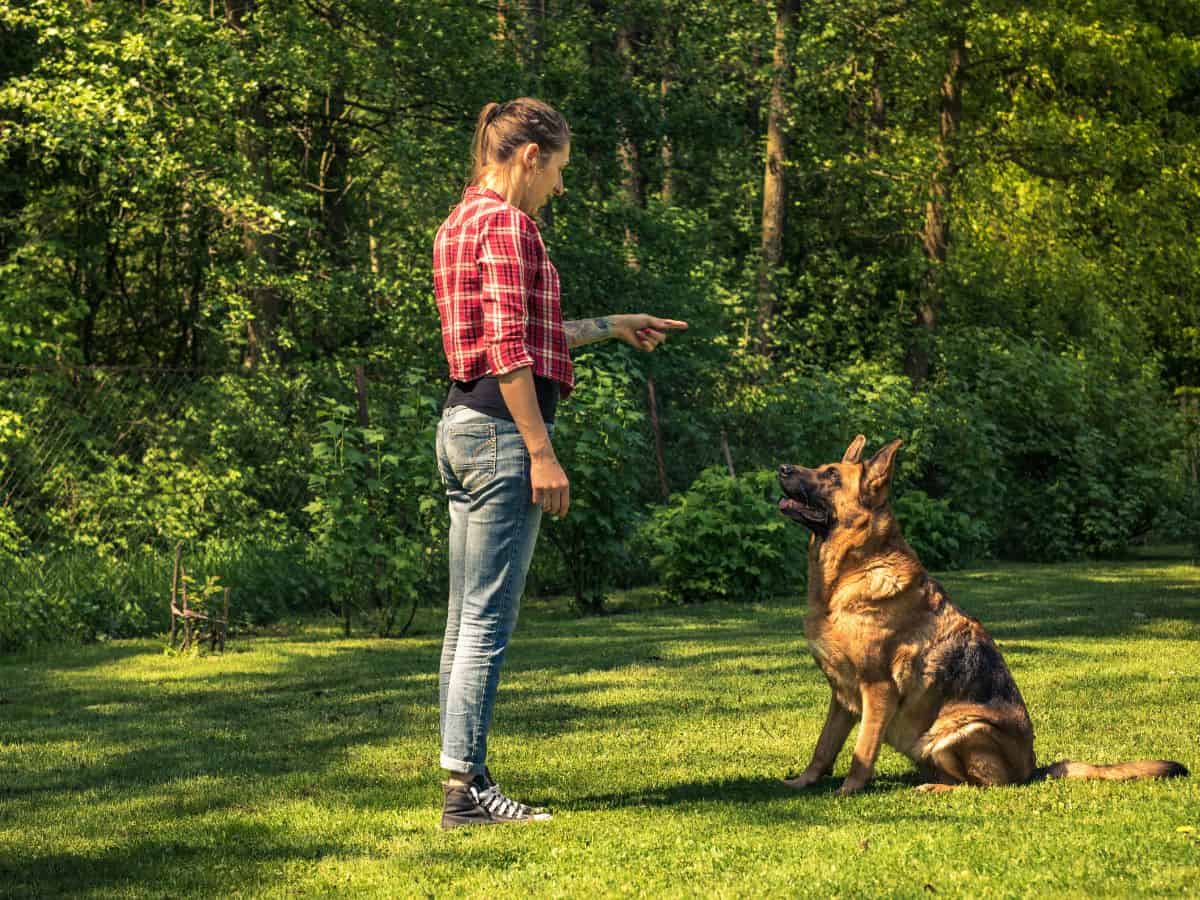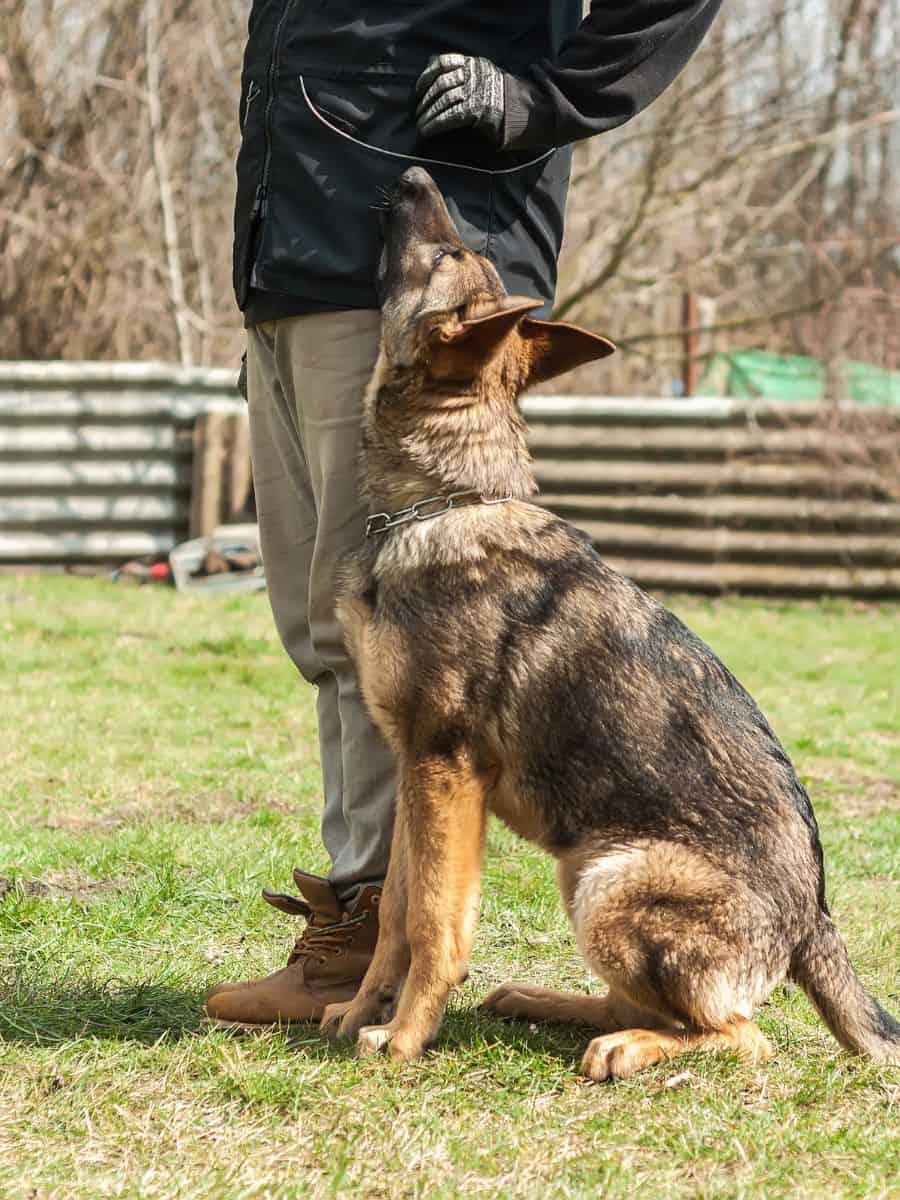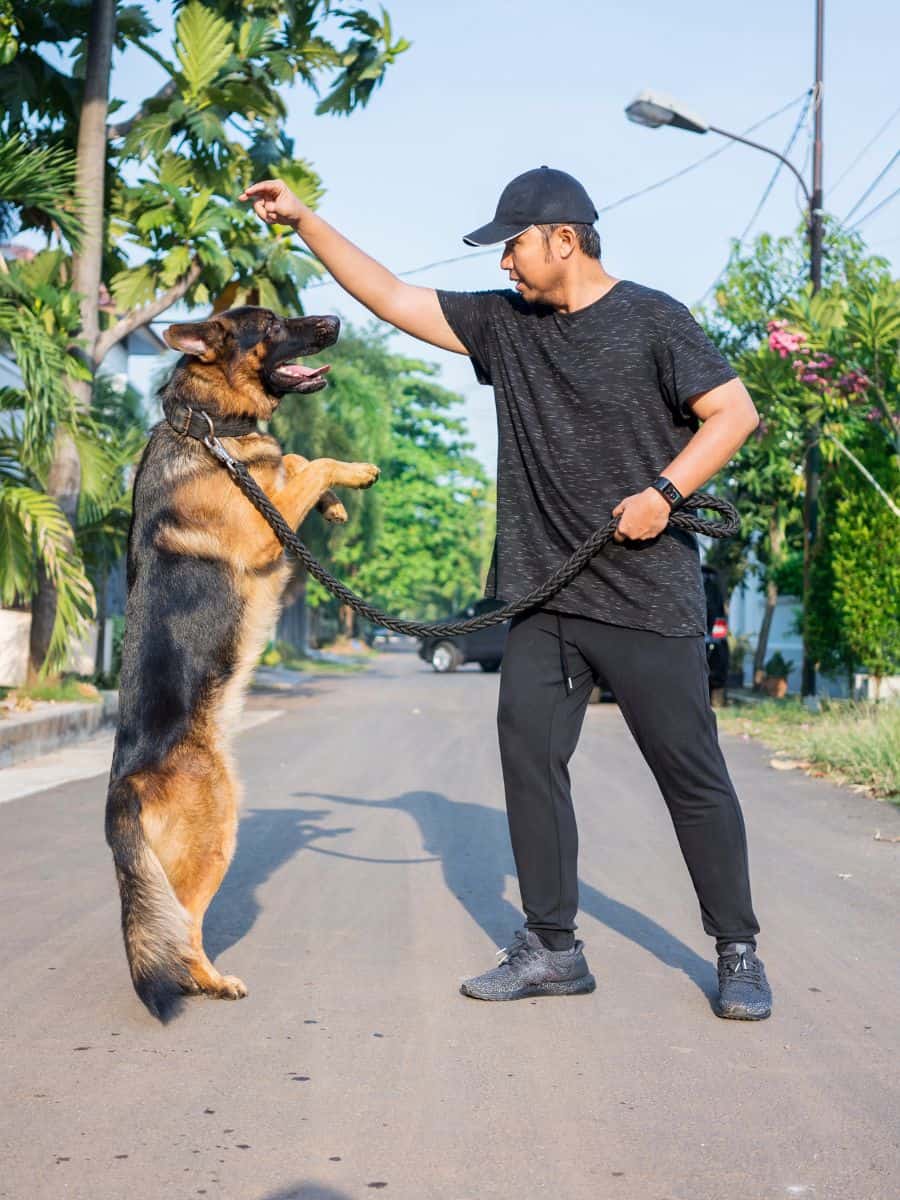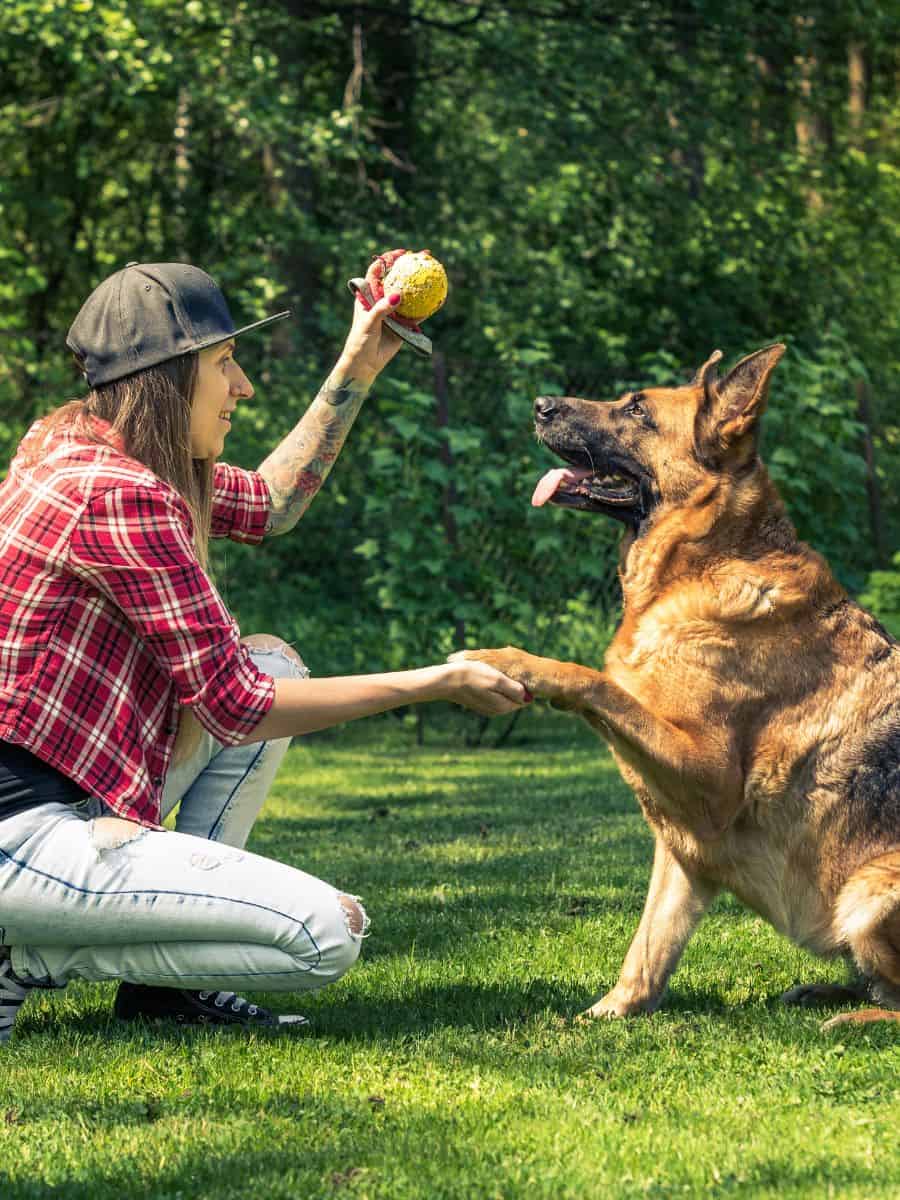Training your German Shepherd can be an incredibly rewarding experience, as these intelligent and loyal dogs are eager to learn and follow commands. Knowing the right commands to teach your German Shepherd is essential for establishing an effective communication system and building a strong bond between you and your dog.
Additionally, numerous studies have found that puppy training is vital for the dog’s future behavior. For example, this study found that participation in puppy and adult classes improved obedience behavior and response to strangers.
This article will provide you with a comprehensive list of German Shepherd training commands that will help you successfully train your dog using positive reinforcement and enhance their skills.

German Shepherd Training Commands: Train Your Dog Like a Pro
As a German Shepherd owner, it’s essential to teach your dog basic obedience commands and gradually proceed to advanced commands for better discipline and interaction.
Positive reinforcement training should always be used when dog training, as adverse techniques, such as using physical punishment, yelling, or using a shock collar, are unethical and do not work as they often make the dog aggressive.
This recent study on the efficiency of electric collars vs. rewards-based training found the latter was more effective in addressing target behavior and general obedience.
Training your German Shepherd is both rewarding and helps strengthen your bond. Here are 16 essential training commands explained step-by-step to get you started on the right paw.
1. Sit

Begin by holding a treat above their nose so they look up. As their hind end lowers, say “Sit” in a cheerful tone and reward. Practice luring them into position repeatedly until they sit just on your cue. Be patient – their intelligence means quick results!
2. Stay
After teaching “Sit”, say “Stay” and take one small step back. If they remain seated, provide a treat and praise.
Gradually increase the distance you move away over sessions. Always reward and return promptly when they obey. Patience is key to teaching self-control.
3. Down
Lure into a down by holding a treat just above their nose and slowly lowering your hand. As their elbows bend, say “Down” encouragingly. Reward the moment their elbows and belly touch down. Repeat until they learn to down just on your cue.
4. Come
With your GSD sitting a short distance away, get their attention with an excited “Come!” Call them happily and reward them profusely when they reach you.
Practice from increasing distances in short sessions to build excitement for responding. Never call them to scold or punish as this undermines the command.
5. Heel
Hold a treat at their nose level and say “Heel” upbeatly. Reward for walking attentively by your left side. Practice without treats to reinforce loose-leash walking.
Maintain a consistent pace and avoid sudden turns which could cause pulling.
6. Leave It!
Present something tempting like food but do not allow them to touch it. Say “Leave it” firmly. When they resist the distraction, reward, and praise.
Build up difficulty over time by gradually increasing the distance to the item. Always reward heavily for choosing to ignore distractions.
7. Drop It
Have your GSD hold a toy or item in their mouth. Say “Drop it” and reward only when it falls from their mouth. Initially, use high-value treats to motivate letting go. Slowly fade rewards to just praise.
8. Place
Designate a dog bed or mat as their spot. Lure onto it with a treat, say “Place,” and reward settling with another treat or praise. Practice having them return on cue in different locations and distractions.
9. Stand

With them sitting, hold a treat between their front paws. As they rise onto all fours to get the treat, say “Stand” encouragingly. Reward and praise standing up calmly on just your cue.
10. Seek
Hide treats or toys around the house and send your German Shepherd to “Seek!” with enthusiastic praise for finding each one. Keep hiding and seeking games fun for nose training.
11. Shake
Take your dog’s paw in your hand and say “Shake” upbeatly. Reward them with a treat when they offer their paw willingly on just your cue.
12. Rollover
Lure onto their side by gently moving a treat along their body. Say “Rollover” as they follow the lure onto their back. Reward when their belly faces upon completion.
13. Jump
Hold a treat at nose level and use hand signals to lure into a standing jump. When all four paws leave the ground, say “Jump” and reward landing on all fours. Build height slowly based on ability.
14. Speak
Encourage vocalization by saying “Speak” and rewarding excited barking with praise and treats. Teach controlled barking on your cue for alerting if needed one day.
15. Fetch or Retrieve

Toss a toy a short distance and use an excited “Fetch!” or “Get it!” cue. When your German Shepherd returns it, say “Give” and reward by throwing it again if they release it. Build up distance thrown gradually based on skill level.
16. No!
The “no” command is essential for controlling your dog’s movements. No, the command is used to stop unwanted behavior.
When your dog exhibits undesirable behavior, say “no” sternly but not aggressively. Reward them when they stop the behavior, reinforcing the command.
Teaching Pleasure Commands – Eat, Play Dead
Pleasure commands like “eat” and “play dead” add more fun to your German Shepherd’s training.
These commands are enjoyable for you and your dog and can also be practical in certain situations.
- Eat Food: Teach your German Shepherd to eat on command by saying, “eat.” Place food in their bowl, and give the command only when you’re ready for your dog to indulge. This can be especially helpful if you have multiple dogs and want to avoid food-related disputes.
- Play Dead: This trick can be amusing and occasionally useful. To teach your dog to play dead, use the command “play dead.” Pair the command with a hand signal to make the lesson more engaging.
Practice these new commands regularly, and always be patient with your German Shepherd. Training is a wonderful opportunity to bond with your dog and expand their skills beyond the basics.
Happy training!
Oh, and when your furry friend is ready for some more challenging sessions, check out our article on German Shepherd tricks.





